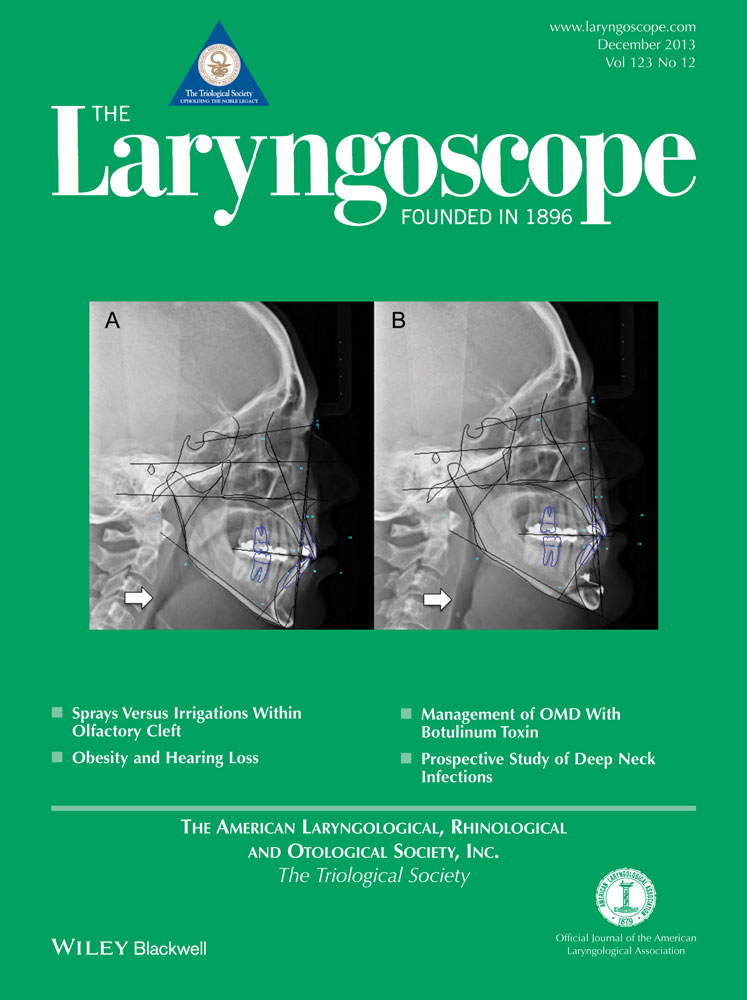Cadaveric study for skull base reconstruction using anteriorly based inferior turbinate flap
The authors have no funding, financial relationships, or conflicts of interest to disclose.
Abstract
Objectives/Hypothesis
To demonstrate the feasibility of an anteriorly pedicled inferior turbinate flap (AITF) as a method for endoscopic reconstruction of anterior skull base defects in the absence of a nasal septal flap.
Study Design
Cadaveric feasibility study.
Setting
University-affiliated tertiary medical center.
Materials and Patients
A cadaveric model was used to investigate the feasibility of harvesting and skull base reconstruction with an AITF. The size and extent of coverage of the flap were investigated. Subsequently, defects resulting from an endoscopic resection of various anterior skull base pathologies were reconstructed with an AITF in patients.
Results
In the cadaveric model (n = 11), the mean length, width, and area of the AITFs were 4.76 ± 0.52 cm, 1.8 ± 0.34 cm, and 4.31 ± 0.87 cm2, respectively. The flap provided a mean of 111 ± 12% (range 95%–133%) coverage of the anterior skull base from the posterior table of the frontal sinus to the sella. Following that experience, ten patients were successfully reconstructed with AITFs, and there were no postoperative cerebrospinal fluid (CSF) leaks or occurrence of meningitis.
Conclusion
The results of this study demonstrate the feasibility of AITFs for the reconstruction of anterior skull base defects in the absence of alternative vascularized flaps.
Level of Evidence
N/A. Laryngoscope, 123:2940–2944, 2013




